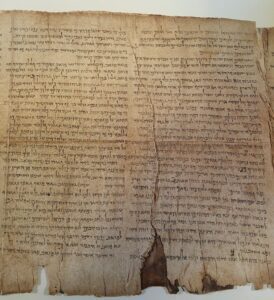Biblical Archaeology
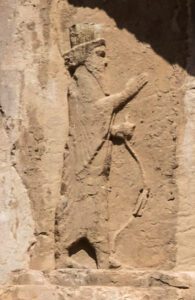
Artaxerxes – By Diego Delso – This file has been extracted from another file: Naghsh-e Rostam, Irán, 2016-09-24, DD 18.jpg, CC BY-SA 4.0, Link
Biblical archaeology has been a fascinating area to monitor over the past several years. The renewed interest in archaeology in the Holy Land affirms Scripture demonstrating the historicity of events portrayed there.
Liberal scholars from academic institutions, many of which are purely secular, have doubted any evidence suggesting the historicity of Scripture. It has only been recently that sufficient archaeology has been done in the Holy Land that artifacts keep proving the Biblical narrative.
One of these includes the Temple Mount Sifting Project, which is literally sifting through tons of discarded earth illegally mined from the Temple Mount and unceremoniously discarded into a dump. Volunteers worldwide are meticulously sifting through this huge treasure of discarded debris to find artifacts dating back to the First Temple period.
Biblical Archaeology Affirms Scripture
It was not long ago that the very existence of an ancient Israel was in doubt. Liberal scholars questioned whether there ever was a Jewish kingdom in ancient Israel, let alone a House of David. Many of the historical characters mentioned in the Old Testament were thought merely mythology. Liberal scholars had multiple people writing the Book of Isaiah, questioned whether Solomon’s mines existed, and even doubted the historicity of Christ himself.
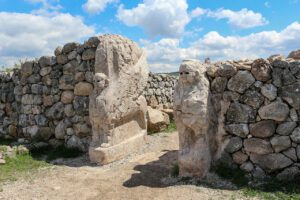
Harrusa – ancient Hittite Civilization – By Bernard Gagnon – Own work, CC BY-SA 3.0, Link
Ancient civilizations such as the Hittites and Edomites were considered mythological until archaeology dug up their history.
Jezebel was considered mythological until her seal was discovered, and many archaeologists considered even Isaiah a fabricated individual until his bulla was recently unearthed.
Liberal scholars doubted the historicity of Pontius Pilate, claiming he was an invention of ancient stories until his name surfaced written in stone. Then, archaeologists discovered an ancient ring bearing his name in Israel near the Herodium – the burial place of Herod the Great.
Many ancient Kings from the Northern and Southern Kingdoms were thought to be mere stories told by the ancient occupants of Palestine to glorify their past until their names were found documented in ancient lands. That was until the names of kings started appearing in ancient stone.
Some archaeologists ridiculed the idea that Israel dwelt in ancient Egypt until they unearthed Hebrew names in ancient Egyptian writings. Then, Hebrew dwellings were dug up right where Scripture says they lived.
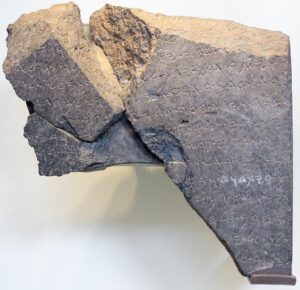
Tel Dan Stele with “House of David inscription” – By Oren Rozen – Own work, CC BY-SA 4.0, Link
Recently, archaeologists have provided evidence for the historicity of King David with several discoveries, including the Tel Dan Stele and his Jerusalem palace unearthed.
Most scholarly archaeologists believed the Exodus of ancient Jews to be a hoax to demonstrate how God chose Israel as a favored people, asserting there is no record of such an event occurring. This was until records of such an event came to light.
Ancient Arabic maps point to a Red Sea Crossing in the eastern part of the Red Sea with the forty years of wandering occurring in modern-day northwest Saudi Arabia. New archaeological findings in Saudi Arabia are consistent with the Biblical narrative, with Mount Sinai being the highest mountain in the area, which happens to have a burnt top.
The Dead Sea Scrolls
The importance of the Dead Sea Scrolls can hardly be overstated. They are ancient Jewish religious manuscripts found by children playing in the Qumran caves in the Judaean Desert on the northern shore of the Dead Sea. These scrolls date primarily from the first and second century BC to the first century AD.
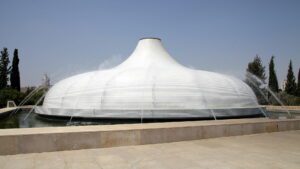
Shrine of the Book in Israel – By Xavier Gillet, Bordeaux, France (xavier33300 on flickr) – Musée de Jérusalem – Israël, CC BY-SA 2.0, Link
Most of these scrolls are now in possession of the government of Israel and housed in the Shrine of the Book on the grounds of the Israel Museum.
Many thousands of written fragments have been found throughout these caves, with the vast majority holding only writing fragments. However, there have been a few well-preserved, almost intact manuscripts also found.
Most of these texts are written on parchment, some on papyrus, and one on copper.
The identified texts include forty percent from Hebrew Scriptures, thirty percent from the Second Temple period, including apocryphal works such as the Book of Enoch, the Book of Jubilees, the Book of Tobit, and the Wisdom of Sirach.
The rest of the manuscripts are sectarian writings of previously unknown documents.
The Great Isaiah Scroll
This was one of the first scrolls discovered by Bedouin shepherds in 1946. It is written in Hebrew and contains the entire text of the Book of Isaiah from beginning to end. Thus, it is Isaiah’s oldest complete copy, about 1,000 years older than its nearest competitor.
It is written on 17 sheets of parchment and is about 24 feet long. Radiometric testing gives its age between 356 and 103 BC and 150 – 100 BC. This is very important for the historicity of Isaiah 53, which is included within the Isaiah scroll. This is the section of Isaiah which explicitly describes events yet to occur concerning the Crucifixion of Christ.
The entire scroll was likely written by a single scribe with writing from 125 to 100 BC. It is consistent with the Masoretic version of Isaiah and preserves all 66 books in the same sequence as today’s Bible.
A group wrote the Masoretic version of Isaiah of Jews known as the Masoretes between the 7th and 10th centuries AD. The oldest existing version of the Masoretic text dates from the 10th century making the Great Isaiah Scroll fully eleven centuries older.
Comparison of the Dead Sea Scroll’s Isaiah and the Masoretic text shows more than 2600 textual variants. However, most variants are minor in nature, including differences of a single word, alternative spellings, plural versus single, and changes in the order of words.
This portion of Isaiah is significant to Christians as it explicitly details the events in the life of Christ, who would live about 100 – 200 years later. Thus, there is no longer any doubt that Isaiah 53 was written many years before the life of Christ.
Sodom and Gomorrah and Biblical Archaeology
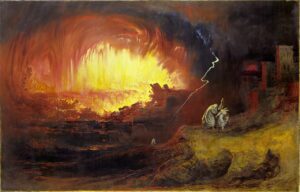
Destruction of Sodom and Gomorrah – By John Martin – Former image source [1]; current image source [2], Public Domain, Link
This team has excavated a site consistent with the Biblical narrative and, over several years, found artifacts that would substantiate the Biblical narrative.
Among these would be a great city that was destroyed by a conflagration and multiple human remains. Additionally, the site shows that it was not built upon for many centuries.
The site has obvious cultural and religious importance as the site was destroyed for its sinful behavior. The finding of the site also confirms the Biblical proscription against sinful behavior, which has obvious consequences.
Summary
Biblical archaeology has improved substantially over the last century. For example, after the Jewish nation of Israel was found, there was a renewed interest in establishing the historicity of the Jewish claim to the land. This encouraged the development of Biblical archaeology and interest in the location of ancient Biblical sites and cultures.
As time passed, the finding of ancient artifacts has accelerated, with these discoveries affirming the Biblical narrative.
Proof of the existence of ancient Jewish kings described in Scripture has been established though once thought to be mythological. Earlier archaeologists believed ancient Israel was hardly more than a few tribal aggregates and certainly not a large, powerful kingdom. Archaeology now affirms ancient Israel was a force to be reckoned with. Ancient kings of other nations described the Jewish nation as a large civilized society and not simple pastoral shepherds.
Modern archaeology finds evidence of a well-organized administration active in First Temple Israel, with multiple land documents and bullae being discovered. These lend credence to an advanced ancient Hebrew civilization of the kind put forth by Scripture.
It is anticipated that further Biblical archaeology will continue to substantiate the Biblical narrative and prove the historicity of Scripture.

